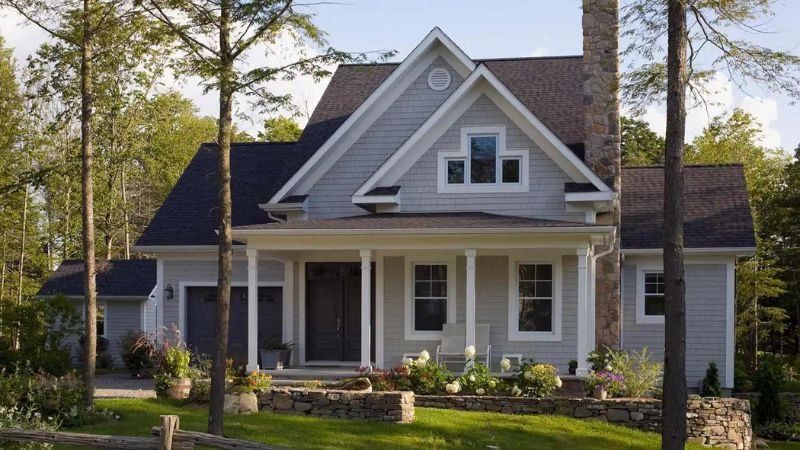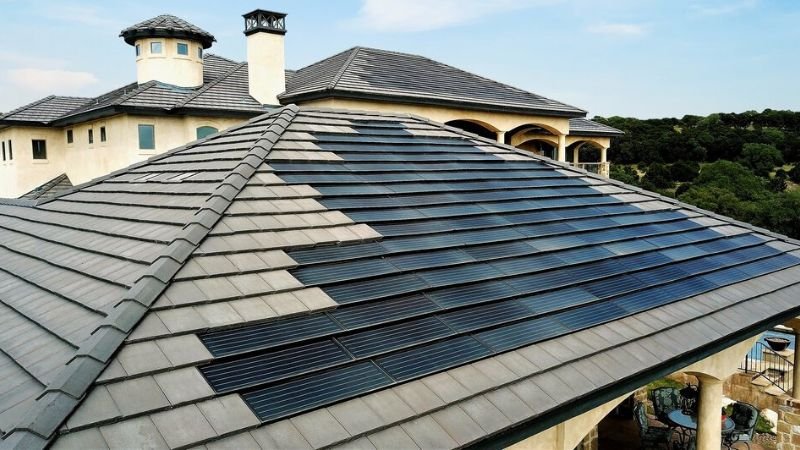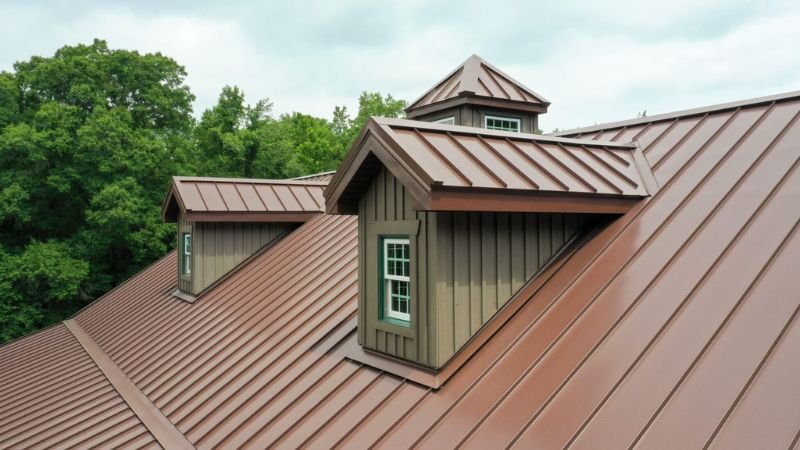Discovering the advantages and disadvantages of pitched roofs can significantly influence your decision when considering roofing options. Pitched roofs, characterized by their sloping design, offer several benefits such as enhanced durability, better water runoff, and potential for attic space utilization. However, they also come with drawbacks like higher initial costs and more complex maintenance requirements. Understanding these factors is crucial for making an informed choice that aligns with your home’s needs and your budget. This article delves into the 10 key advantages and disadvantages of pitched roofs, providing valuable insights to help you weigh your options effectively.
10 Advantages And Disadvantages Of Pitched Roof
Advantages of Pitched Roofs
1. Durability and Longevity
Pitched roofs are renowned for their durability, often outlasting other roofing types. Their sloped design allows rainwater and debris to easily slide off, reducing the risk of water damage and structural issues over time. With proper maintenance, pitched roofs can withstand harsh weather conditions such as heavy snow loads and high winds.
Also, Read – 9 Eco Friendly Roofing Options To Consider
2. Effective Water Drainage
The steep slope of pitched roofs facilitates efficient water drainage. This helps prevent water pooling, which can lead to leaks and deterioration in flat roof structures. Properly installed and maintained pitched roofs ensure minimal water damage and maintain structural integrity over their lifespan.
3. Attic Space Utilization
One significant advantage of pitched roofs is the potential for usable attic space. The steep angle creates ample headroom compared to flat roofs, allowing for storage or conversion into living areas. This additional space is valuable for homeowners looking to maximize their property’s functional area without expanding the footprint.
4. Enhanced Ventilation
Pitched roofs naturally promote better ventilation throughout the attic space and the entire home. By assisting in the regulation of interior temperature, this ventilation lessens the load on HVAC systems and improves energy efficiency overall. Proper airflow also mitigates moisture buildup, which can otherwise lead to mold and mildew issues.
5. Aesthetic Appeal and Architectural Versatility
Pitched roofs offer timeless aesthetic appeal and complement various architectural styles, from traditional to contemporary designs. They contribute to a home’s curb appeal and resale value, appealing to potential buyers seeking classic or region-specific architectural features.
Also, Read – Top 7 Roofing Trends For Modern Homes In 2024
6. Snow and Debris Shedding
In regions prone to heavy snowfall, pitched roofs shed snow more effectively than flat roofs. This reduces the risk of structural damage due to snow accumulation and prevents the formation of ice dams, which can lead to water infiltration and roof damage.
7. Sustainability and Eco-friendliness
Pitched roofs can be constructed with eco-friendly materials such as metal, clay tiles, or sustainable wood shakes. These materials are often recyclable and contribute to energy efficiency by reducing heating and cooling costs through natural ventilation and insulation properties.
8. Design Flexibility and Customization
Homeowners have a wide range of design options with pitched roofs, including varying slopes, materials, and finishes. This flexibility allows customization to suit personal preferences, climate considerations, and architectural requirements, enhancing overall home design and functionality.
9. Sound Insulation
Pitched roofs typically provide better sound insulation compared to flat roofs, reducing external noise transmission into the interior spaces of the home. This can contribute to a quieter and more comfortable living environment, particularly in urban or noisy areas.
10. Resilience Against Fire
Certain materials used in pitched roofs, such as metal or clay tiles, offer inherent fire resistance. This can enhance overall home safety and provide peace of mind, especially in areas prone to wildfires or where fire safety regulations are stringent.
Disadvantages of Pitched Roofs
1. Higher Initial Costs
Pitched roofs generally require more materials and labor during installation compared to flat roofs, resulting in higher initial costs. The complexity of the roof structure and steep slope can also increase construction expenses.
2. Maintenance Challenges
Maintaining pitched roofs can be more demanding than flat roofs. Regular inspection and maintenance tasks such as cleaning gutters, checking for damaged shingles, and ensuring proper flashing are essential to prevent leaks and prolong the roof’s lifespan.
3. Limited Suitability for Modern Architectural Styles
While versatile, pitched roofs may not complement certain modern architectural designs that favor flat roof structures. This limitation can influence aesthetic choices and architectural compatibility when designing or renovating a home.
4. Space Limitations in Urban Settings
The steep slope of pitched roofs may limit usable space in urban settings where lot sizes are smaller and zoning regulations restrict building height. This can impact attic space utilization and overall functional design considerations.
5. Complexity of Repairs
Repairing pitched roofs, especially in steep angles, requires specialized skills and safety measures. Accessing and working on steep slopes can be challenging for contractors, potentially prolonging repair timelines and increasing costs.
6. Potential for Pest Infestation
The space beneath pitched roofs, especially in attic areas, can provide habitats for pests such as birds, rodents, and insects. Proper sealing and maintenance are necessary to prevent pest infestations and mitigate associated damage.
7. Weather Vulnerability During Installation
Pitched roofs are more susceptible to weather-related delays and challenges during installation compared to flat roofs. Adverse weather conditions such as rain or wind can disrupt construction schedules and affect roofing quality.
8. Weight Considerations
Certain materials used in pitched roofs, such as clay tiles or slate, can be heavier than materials used in flat roof construction. This weight factor may require additional structural support and increase construction complexity and costs.
9. Limited Accessibility
The steep slope of pitched roofs can make them less accessible for maintenance and repairs, requiring specialized equipment and safety measures. This accessibility challenge can affect the frequency and efficiency of roof upkeep tasks.
10. Initial Design Constraints
Designing a pitched roof requires careful consideration of slope, materials, and structural requirements. Architects and homeowners must balance aesthetic preferences with practical considerations such as local building codes and climate conditions.
Conclusion
In conclusion, choosing between a pitched roof and other roofing types depends on various factors including climate, budget, and aesthetic preferences. While pitched roofs excel in durability and aesthetic appeal, they may require more upkeep and initial investment compared to flat roofs. Evaluating the pros and cons outlined here will empower you to make a well-informed decision that enhances the longevity and functionality of your home’s roofing system.
FAQs
What are the main advantages of pitched roofs?
Pitched roofs offer superior durability, effective water drainage, potential for attic space utilization, enhanced ventilation, and a traditional aesthetic appeal.
What are the disadvantages of pitched roofs?
The main drawbacks include higher initial costs, more complex installation, maintenance challenges such as cleaning gutters and inspecting for leaks, and limited suitability for certain architectural styles like modern flat-roofed designs.



